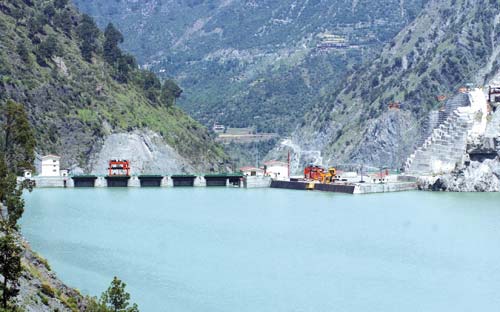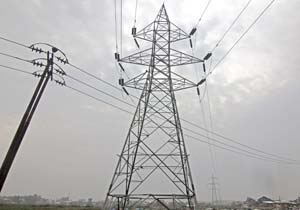Kashmir’s energy deficit is a major public concern and the ongoing outages are a sort of rare summer crisis, especially in Srinagar. Tasavur Mushtaq offers a detailed primer of the energy issues to help public discourse stay correct and informed.
What is the state of J&K’s power generation?
There are three players on the generation front – the state government’s Power Development Corporation (SPDC), the central government’s NHPC and independent power producers (IPP) running small power stations. State government is into hydropower and thermal power generation unlike all others who are into hydropower sector only.
SPDC owns 20 power stations across the state with cumulative installed capacity of 759.96 MW. But all of them fall in small and micro category, leaving only 450 MW Baglihar as the main power house. Most of these projects are old machines and operate at de-rated capacities producing less power than expected. It has the gas turbines at Pampore that generates 175 MW of power but it is rarely put to operation because of the huge cost of generation.
Power Development Department generates thermal power using diesel generators in remote areas where there is no electricity. It has the capacity to produce 33.146 MW energy through these DG sets in Kargil, Leh, Machil, Tangdar and other inaccessible areas of the state. There are 65 DG sets functional in Leh, 58 in Kargil, 18 in Gurez and one each in Machil and Keran.
Though there are a number of small projects under implementation, the IPPs are currently operating two projects; one each at Athwathoo (Bandipore) and Brenwar (Budgam) produced a cumulative 17.5 MW energy.
NHPC is the major player. Its four major power projects generate 1680 MW energy that gets into the northern grid. In addition to this, its twin projects in Ladakh are generating electricity. But given the lack of proper transmission and distribution set up, the twin projects in Ladakh are functioning at the lowest of their installed capacity. If the two projects at Nimo-Bazgo and Chutak are included, then NHPC’s overall installed capacity in the state goes to 1769 MW.
What is the quantum of energy that J&K requires and actually consumes?
The energy requirements of the state are phenomenally up, year after year. Against 2004-05 when J&K required 9640 million units of energy in a year, it has reached 17823 million units in the last financial year which is nearly double. But the energy availability is a restricted affair. This creates energy deficit which is gradually increasing – from 2334 million units (24.21%) in 2004-05 to 6283 million units (35.21%) in 2012-13. Unlike the demands, the actual consumption of energy has a modest growth because it is solely dependent on supplies. J&K consumed 11115.41 million units in 2011-12 and 11560.03 million units in 2012-13. The gross per capita energy consumption has nearly doubled in last 15 years.
How does J&K manages its energy supplies?
J&K has multiple energy suppliers. PDC’s network of projects is contributing significantly especially after the Baglihar-I started operations. Though half of Baglihar-I’s generation goes for debt servicing, it still is a major source of energy supply. PDC energy supplies nearly doubled after Baglihar started commercial operations. J&K self-generation jumped from 870.54 million units in 2007-08 to 1649.07 million units in 2008-09. In 2011-12, J&K generated 2581 million units.
From NHPC operations, J&K state gets 12% of the overall generation as royalty which is added to the overall energy pool of the state.
J&K is a beneficiary state in a number of power projects operating within and outside the state. A share (cumulatively 1230 MW) from their generation is allocated to the state under which J&K has a share of 334 MW from eight NTPC projects, 68 MW from two NPC stations, 569 MW from seven NHPC stations, 259 MW from six other projects outside the state. This energy already allocated to the state is lifted from the Northern Grid.
There has been a modest increase in the purchases that J&K makes from central PSUs. From 5778 million units in 2002-03, the yearly purchases have reached 8534 million units in 2011-12.
Is it a costly affair?
Yes. Purchasing energy is very costly. Power Development Department purchases power from PDC and central PSUs, transmits it to the state and distributes to the consumers. J&K purchased energy from CPSUs for Rs 3051.02 crore in 2011-12 in addition to the purchase of energy from SPDC worth Rs 710.75 crore. It essentially means that J&K purchased energy for Rs 3761.772 crore in 2011-12. For managing the entire system of transmission and distribution, the PDD spent Rs 716.245 crore which included Rs 536.38 crore that went as salary and wages to around 27053 employees of PDD. It essentially means power purchase, transmission and distribution costs Rs 4478.012 crore to J&K state in 2011-12 which is Rs 1122.212 crore more than that of 2010-11.
So all this money is being recovered from the consumers?
Not exactly. PDD is unable to bill every unit to the consumers because it has massive losses in transmission and distribution. For the year 2011-12, PDD lost 415.63 million units during inter-state transmission, 674.69 million units during intra-state transmission and 5758.08 million units as distribution losses. It makes J&K No 1 state that has 61.61% T&D losses of which 51.80% are plainly distribution losses. That means the energy that was actually billed in 2011-12 was only 4267 million units.
The collections are proportionate. For the first time in history, the PDD power tariff collections were in four-digits when it raised Rs 1200.14 crore, the highest ever. But the huge mismatch between the capital raised and the capital spent for purchase and distribution is the net loss that is adding to the state government’s public finances.
So who consumes how much?
Without taking Ladakh into consideration (because it is not connected with the grid), if it is Jammu versus Kashmir, then Jammu consumed 2350 million units and Kashmir 1917 million units in 2011-12. A broad classification on the basis of sectors throws up these findings; 33.56% to domestic, 19.91% to industries, 16.30% to government departments, 14.91% to PHE, 7.81% to commercial consumers and the rest to public lighting and other requirements.
By the end of March 31, 2012, J&K had 1332036 consumers of which 723629 were in Kashmir. Jammu has more commercial, PHE and government consumers than Kashmir. On the connect load basis, however, Jammu has more load than Kashmir. The government departments had arrears of Rs 1154 crore at the end of 2011-12.
If J&K consumes much less than what it purchases as most of it is lost during transmission and distribution, is there nobody trying to plug the holes?
Yes, the government is working. J&K is implementing three different projects – two of which are centrally sponsored schemes, which will help creating an infrastructure which will help to reduce losses. The power transmission and distribution systems are worn out and unable to manage a huge load that the current demography offers.
RGGVY, a Rs 917 crore centrally-funded rural electrification project is being implemented in all the 14 erstwhile districts of the state. While NHPC is implementing it in Udhampur, Kathua, Jammu, Srinagar, Budgam, Leh and Kargil, SPDC is implementing it in Kupwara, Anantnag, Doda, Baramullah, Pulwama, Rajouri and Poonch.
Restructured- Accelerated Power Development and Reforms Programme (R-APDRP) is another central sponsored scheme aimed at bringing down T&D looses to 15% within project period of 5 years with minimum target of 3% a year. It envisages establishing reliable and automated systems for collection of accurate base line data. Its part A covers Ring Fencing, Feeder Metering, DT Metering, application of Information Technology and Supervisory Control and Data Acquisition/DMS in Distribution Sub Sector and part B is aimed to strengthen Distribution System. Central government has sanctioned Rs 191.25 crore for part-A and Rs 1665.27 crore for part-B. State’s thirty towns are being covered under this scheme.
Under Prime Ministers Reconstruction Programme, the state is spending Rs 1350.00 crore for developing infrastructure at 220KVand 132KV level by way of construction and augmentation of grid stations. Most of this amount stands spent already.
Can J&K ever have a satisfactory energy supply?
Yes. Do not give up the hope. Commissioning of Baglihar has substantially reduced the dependence on imports, though only half of its energy is available for the consumption within the state. Its next stage is getting ready later 2014 and that will be huge improvement. But it will all depend on how judicious the consumers are with the load. If theft and transmission losses are managed, the availability will improve phenomenally. State can not afford a recurring loss of more than Rs 2000 crore a year simply on a service delivery, even though it is crudely resorting to hikes that impact only a section of the consumers who are otherwise paying.
Anything about energy futures?
For a variety of reasons, energy could not remain a priority for many governments in the past. But the situation is changing now. Chief Minister has already stated that his government will offer no more project for implementation to the NHPC. Though it will not help state get any of the project back from NHPC which were transferred to the central PSU by the last NC government, this reassurance means a stop to what was happening in the state. Right now, NHPC is implementing two projects one of which (Uri-II) will be ready later this year. By 2020, SPDC will be adding not less than 3000 MW to its capacity. But, by then, the demand might have nearly doubled!!

















